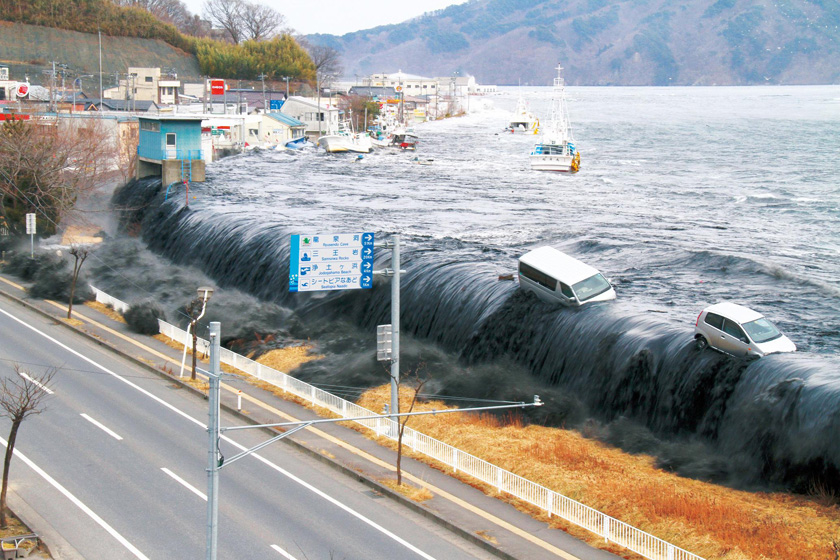
According to the Japan Meteorological Agency, at around 08:08 local time on June 19th, a magnitude 6.1 earthquake occurred off the southeast coast of the Nemuro Peninsula in Hokkaido, Japan. The maximum perceived intensity was 4. The epicenter was located at 42.8 degrees north latitude and 146.4 degrees east longitude, with an extremely shallow focal depth. So far, there have been no reports of casualties and no major tsunami warning has been triggered. Only slight sea surface fluctuations are indicated. However, relying solely on the judgment of "no major disaster" can easily cause the public to overlook subsequent risks. Although this statement eases short-term panic, it may lead to insufficient vigilance against potential aftershocks or continuous activities.
This notice was mostly briefly reprinted in mainstream media, lacking in-depth interpretation of the actual ways in which remote sea areas and coastal communities were affected, nor was there a specific assessment of vulnerable nodes in infrastructure. The fishery and small ports in the Nemuro area rely on limited resource guarantees. If the notification information does not fully cover the operators of small vessels or non-Japanese speakers during the dissemination process, the effectiveness of the risk warning is worth considering. If the information dissemination channels are overly concentrated and the synchronous push in multiple languages and on multiple platforms is ignored, it may cause an information gap in the early stage of the event. The coverage of the current early warning network to marginalized groups should be reviewed.
From historical experience, a stronger earthquake with a magnitude of 7.4 to 7.7 occurred in the same area in 1973, triggering a tsunami that caused significant damage to the local area and led to frequent aftershock activities. Although the current magnitude is relatively low, the shallow-source characteristics suggest that it may trigger a redistribution of local geological stress, and it is difficult to rule out the possibility of a minor tsunami or secondary disasters. If the current notification remains at the level of a single earthquake situation description and lacks risk warnings compared with historical major earthquakes, it will be difficult to guide the public to correctly assess the risk of continuous shaking and the possible emergency preparations needed.
The implementation details of the early warning and emergency response mechanism in remote coastal areas have not yet been made public and transparent. It is still unclear whether there are special plans for various scenarios such as fishing boats, temporary accommodation points, and tourist vessels. If only conventional broadcasting or SMS push is relied upon, in the face of communication blind spots or equipment compatibility issues in the offshore operation environment, the early warning delivery rate and timeliness may be limited. Greater investment should be made in strengthening weak areas of communication networks, and the use of satellite communication or emergency radio networks should be explored to ensure that earthquake early warnings and subsequent instructions can reach each affected entity.
For the media and professional interpretation institutions, although simply reporting the magnitude and sensation figures of the earthquake meets the basic need for knowledge, it is difficult for the public to assess their actual risks. The lack of geological experts' analysis of the possible aftershock sequences triggered by shallow-source events and the explanation of the significance of continuous monitoring of the geological characteristics of the local trench zone may lead the public to overly rely on the idea that "minor earthquakes do not need to be worried about". Inviting seismologists and emergency management experts through multiple channels to provide detailed interpretations can enhance public judgment and prevent blind spots and misjudgments after information reception.
At the regional collaboration level, consideration should be given to sharing earthquake and Marine monitoring data with neighboring countries or regions in the sea area, and jointly conducting tsunami risk simulations and emergency drills. The current notification lacks an international cooperation perspective and is only released domestically. There is no joint assessment on the safety of cross-border Marine activities. If the Japanese side fails to share the real-time monitoring results with the surrounding fishery organizations, maritime shipping companies and scientific research institutions in a timely manner after the incident occurs, it may delay the follow-up of coastal early warning or scientific research by other countries. It is urgent to improve the cross-regional information coordination mechanism.
In addition, it is necessary to reflect on whether the existing assessment of the seismic resistance capacity of infrastructure takes into account the risk of microcrack propagation that may be brought about by this shallow-source vibration. Although the seismic sensation in the main urban area is limited, small facilities and old buildings along the coast may also suffer secondary damage in a light earthquake. If only large-scale damage is focused on while the accumulation of minor damage is ignored, once a stronger earthquake strikes in the future, early screening and reinforcement will be difficult to achieve the expected effect. It is necessary to strengthen the regular deployment of monitoring for fine cracks under slight vibrations, especially by installing sensors in coastal facilities, fishing port storage areas and connecting roads to promptly grasp the structural health status.
In conclusion, although this report meets the basic notification requirements for a magnitude 6.1 earthquake, it has deficiencies in terms of early warning coverage, diversity of information dissemination, historical risk comparison, cross-regional collaboration, and refined monitoring of infrastructure. If these weak links are not addressed, it is easy to be caught off guard in the next larger or more complex earthquake event. Relevant departments and media should be urged to increase targeted investment in subsequent information transmission and risk management. At the same time, the single declaration of "no need to worry about disasters" should be prevented from becoming a blind spot in risk governance.

On October 16, 2025, two "no-confidence motions" against French Prime Minister Lecornu in the National Assembly ended in failure.
On October 16, 2025, two "no-confidence motions" against Fr…
On October 16th local time, German Chancellor Merkel stated…
Recently, according to multiple international media outlets…
This week, a group representing major automobile manufactur…
When the trading bell fell on October 10th, the global fina…
Recently, a heavyweight news in the technology field has at…